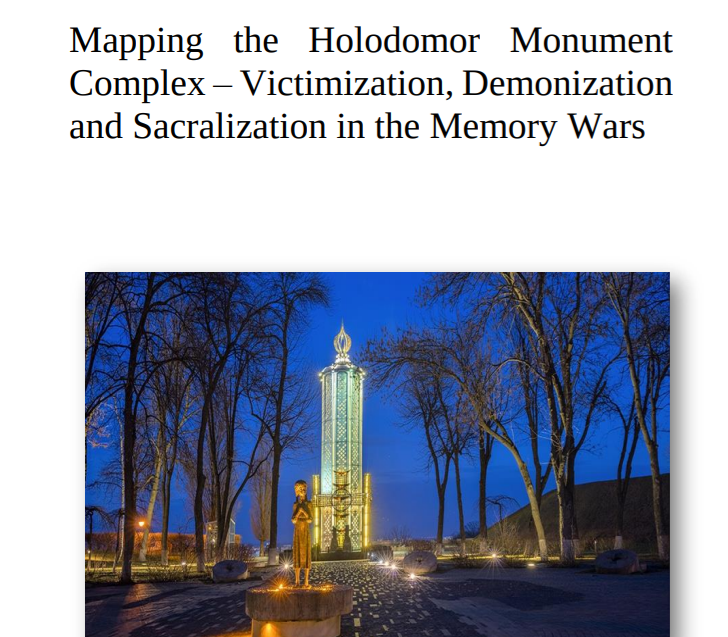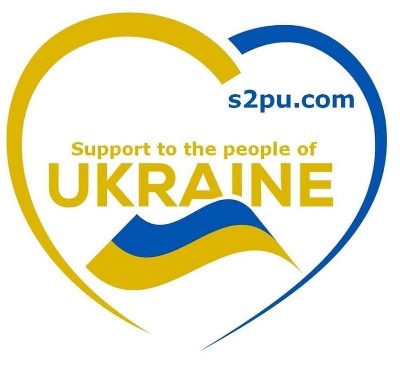 Most people we ask in Nordic countries have never heard about Holodomor and our hope with our association is, among other, to raise awareness about the topic in the Nordic countries and internationally.
Most people we ask in Nordic countries have never heard about Holodomor and our hope with our association is, among other, to raise awareness about the topic in the Nordic countries and internationally.
From:
Mapping the Holodomor Complex Victimization, Sacralization and Demonization in the Memory Wars — Frank Hordijk Master Thesis in Media- and Documentationscience MDV-3950 Spring 2018 Supervisor: Henrik Gustafsson
We believe that this can contribute to a better understanding of the political conflict in Ukraine at another level. During Soviet times, Ukraine did not
exist as an independent nation state, except for a few years after the Russian revolution. Since that time, Ukraine did not gain independence until 1991.
Then we come to the significance of the scope of the Holodomor in its representation as memory text in film, monuments, and museum. By scope I’m referring to the aspects of time-periods and region that lies within its definition. It’s on this point the term Holodomor often becomes unclear and inconsistent. This is due to the occurrence of not just one famine, but three in the periods of 1921–22, 1932–33 and 1946–1947, 16 which we will see is also manifested at the memorial complex in Kiev in the form of engraved text on the central monument on the site.
The images of nakedness and hunger can often be seen in photographs of the Holodomor where dead skeletal bodies lie strewn by the roadside to later be carried off by carts to a mass grave. The nakedness can also refer to that of being stripped of all material wealth, food, and property, which was the fate of the kulaks17 during the collectivization and the following de-kulakization in the Soviet Union under Stalin’s rule. This enemy image is of importance in this study as it is found in the narrative of the film Bitter Harvest and shall therefore need some further elaboration. In short, a kulak was a wealthy farmer which supposedly exploited the poor, for instance for work on their farmlands. The kulak was also rumored to be a saboteur of harvest machinery and actively undermining the agricultural revolution. They were therefore seen as a significant problem during the collectivization and five-year plan of Stalin. The communists in power, were then able to transform the term kulak into an elastic enemy image to label anyone who refused to join the collective, even though they were in fact utterly poor farmers. In a way the destruction of the kulak can be likened to that of the Jews but there were certain important differences. Both the Jew and the kulak were looked upon as vermin and treated as such.
Have the researchers convinced the public that the Holodomor was genocide? The findings the US Congress Commission on the Ukraine Famine made in 1988 say that it was genocide. However, the US government does not officially confirm this due to the position of the Russian Federation, which rejects this qualification of the famine. In November 2006 the Verkhovna Rada of Ukraine declared the Holodomor as an act of genocide. Yet the UN General Assembly does not recognize this. (Kulchytsky 2015, not paginated)
Concerning the Harvest of Despair documentary, one can find a lot of relevant data for narrative analysis on the webpage of The Ukrainian Canadian Research and Documentation Centre (UCRDC). It has a vivid description of the Holodomor on their webpage, which begins as follows:
It is called the forgotten holocaust - a time when Stalin was dumping millions of tons of wheat on Western markets, while in Ukraine, men, women, and children were dying of starvation at the rate of 25,000 a day, 17 human beings a minute. Seven to ten million people perished in a famine caused not by war or natural disasters, but by ruthless decree.

Comments powered by CComment